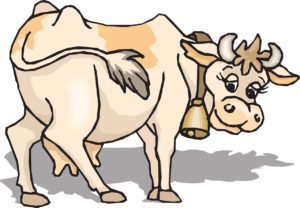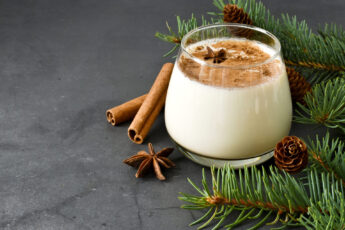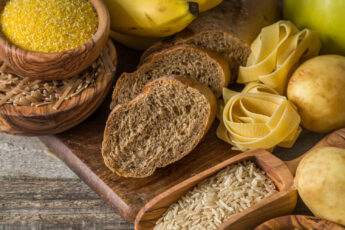When you think of beef, seaweed isn’t the first association you might make, and vice versa. When many people today think of beef, they might first think of climate change, methane, and negative articles. There’s reason to change thinking here. Stay with me here.

Photo: Jean-Pascal Quod, via Wikimedia Commons
The past few years research has shown that when a type of red seaweed, Asparagopsis taxiformis, is added to the diets of beef and dairy cows, they’ll burp out WAY less methane. This is important because, contrary to popular myth, “cow farts” are not where most of their methane comes from.
This impact of adding seaweed to their diets was interesting at first and may even revolutionize how beef and dairy cows are fed. Their diets have long been studied to optimize nutrient intake for best weight gain and milk production, but now their diets may also be optimized to also reduce methane output.
How Much Seaweed Does It Take?
Not much, as it turns out. In feedlot trials, using about 1% of an Asparagopsis seaweed formulation seems to have reduced methane emissions by more than 95%. This meta-analysis looked at 14 different studies and found methane reductions of up to 97% by adding seaweed to the diets of cows and cattle.
One company, Australis Aquaculture (I have no connection to this company), reports adding about 0.5% of its Asparagopsis formula to feed reduced methane production by 80%. These are heady numbers and if the process can be scaled up, this seaweed dietary addition could go a long way towards reducing the methane output of cows.
Are The Cows Impacted From The Seaweed Addition?
Not negatively, it seems. The meta-analysis linked above, found that milk production didn’t change with the added seaweed, and feedlot cattle fed Asparagopsis gained the same amount of weight as those not fed the seaweed, but produced significantly less methane.
From “Pest” To “Plus”
Many seaweeds, including Asparagopsis taxiformis, are edible by humans, and contain some minerals, vitamins, and protein, although humans don’t usually eat seaweeds in large amounts.
Asparagopsis taxiformis has been recognized as “among the 100 worst invasive seaweeds in the Mediterranean Sea”. Finding a use for it in cattle feed could not only help reduce methane production, but also reduce a seawater nuisance.
The “Back Side” Of Cow/Beef Methane

Photo: Pixabay
Cows don’t “fart” methane, but it’s produced when their manure decomposes. Through new and evolving technologies, the manure’s methane-rich “biogas” can be captured and upgraded for use in the natural gas pipeline, making it another form of biofuel.
Dairy farmers see this as an additional way to meet their Net-Zero Initiative goals by 2050. As it is, they already are feeding dairy and beef cattle with “waste products” like fermented grain discards from breweries, almond hulls, even “ugly” veggies that no one will buy.
Keeping It Real
The dairy industry can, and should, reduce its environmental footprint. But the carbon footprint of the ENTIRE dairy industry accounts for 2% of total US greenhouse gas (GHG) emissions. Per the EPA, 27% of US GHG comes from electricity production, another 25% from (non-agriculture) transportation. Focusing solely on beef, dairy, or even agriculture would appear misguided.
Cut-To-The-Chase Takeaway: Environmental “Two-fer”
It can be a good thing when dairy science and marine science and technology get into the same room for the common good. Turning waste and weeds into environmental resources is my idea of 21st century progress. Every industry should make such strides — now.
Feature Photo: Megumi Nachev on Unsplash Jean-Pascal Quod, via Wikimedia Commons






